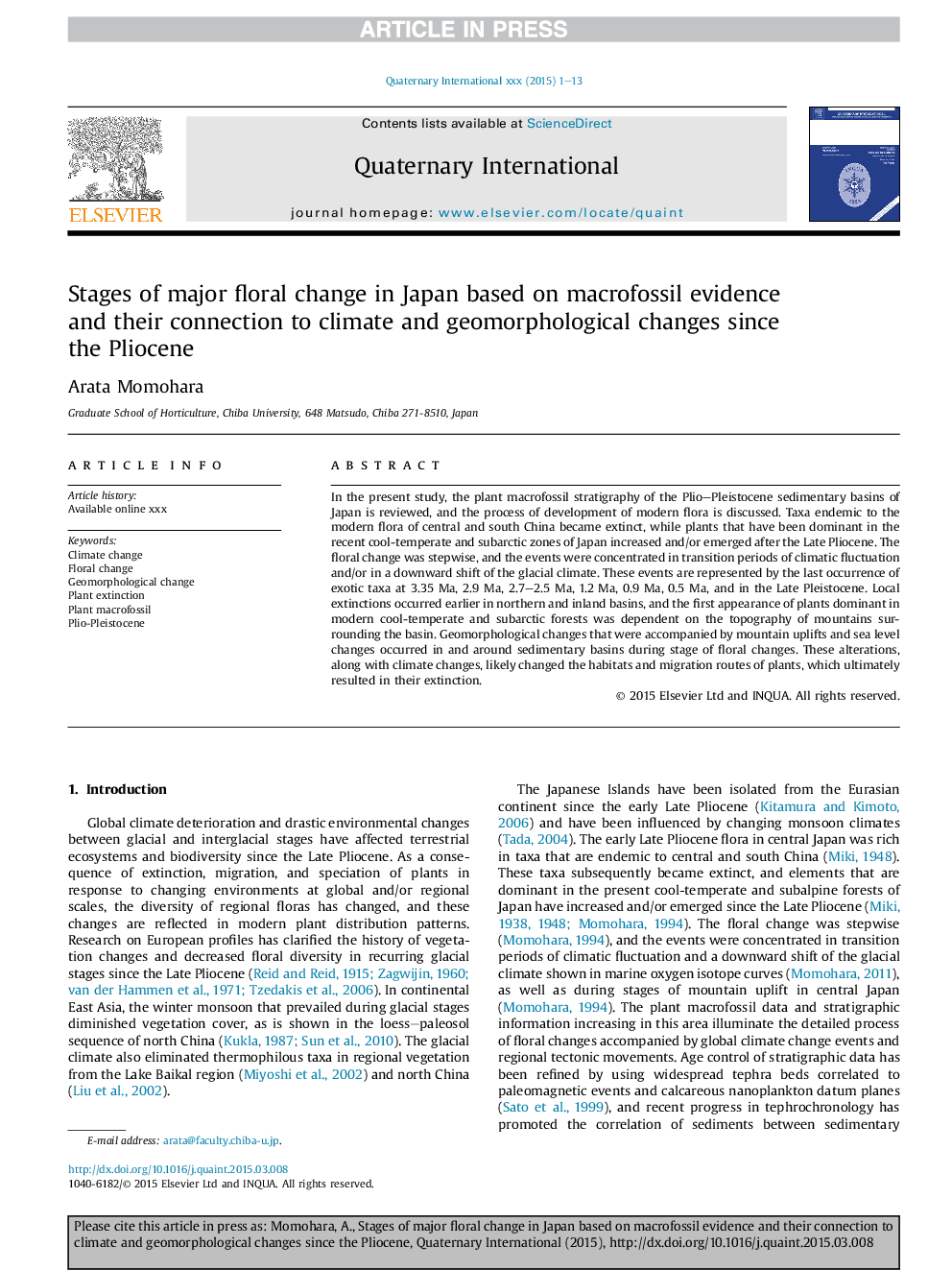| Article ID | Journal | Published Year | Pages | File Type |
|---|---|---|---|---|
| 7451354 | Quaternary International | 2016 | 13 Pages |
Abstract
In the present study, the plant macrofossil stratigraphy of the Plio-Pleistocene sedimentary basins of Japan is reviewed, and the process of development of modern flora is discussed. Taxa endemic to the modern flora of central and south China became extinct, while plants that have been dominant in the recent cool-temperate and subarctic zones of Japan increased and/or emerged after the Late Pliocene. The floral change was stepwise, and the events were concentrated in transition periods of climatic fluctuation and/or in a downward shift of the glacial climate. These events are represented by the last occurrence of exotic taxa at 3.35Â Ma, 2.9Â Ma, 2.7-2.5Â Ma, 1.2Â Ma, 0.9Â Ma, 0.5Â Ma, and in the Late Pleistocene. Local extinctions occurred earlier in northern and inland basins, and the first appearance of plants dominant in modern cool-temperate and subarctic forests was dependent on the topography of mountains surrounding the basin. Geomorphological changes that were accompanied by mountain uplifts and sea level changes occurred in and around sedimentary basins during stage of floral changes. These alterations, along with climate changes, likely changed the habitats and migration routes of plants, which ultimately resulted in their extinction.
Related Topics
Physical Sciences and Engineering
Earth and Planetary Sciences
Geology
Authors
Arata Momohara,
